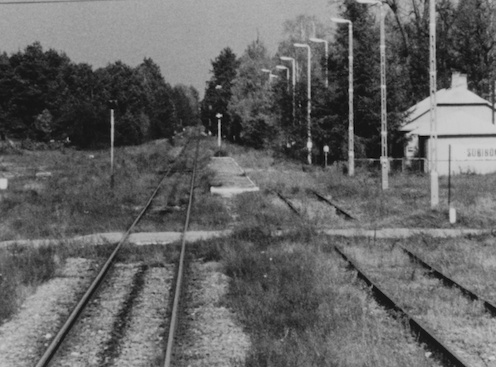Sobibor, October 14, 1943, 4 P.M.
Full Description
A companion film to his celebrated masterpiece, SHOAH, Claude Lanzmann’s new film is about the revolt at the infamous Sobibor camp in Poland in 1943 when Jewish inmates stage an uprising – the only successful one at the Nazi death camp – against their Nazi captors. Intercut with location footage shot in present-day Warsaw, Minsk, and at the site and museum of Sobibor, the film features an unforgettable interview filmed in Jerusalem with one of the protagonists, Yehuda Lerner, who took part in the revolt as a 17-year-old. Lanzmann’s film recounts the story of this remarkable insurrection, which saw Jewish prisoners kill their SS guards, and hundreds, many of them teenagers, make their escape. Organized by the Jewish-Soviet prisoners of war, the uprising was a milestone of Jewish resistance and precipitated the closure of the camp shortly afterwards. Lanzmann reconstructs the distant past with questions remarkable for their journalistic acuity, then sets this against images of modern Poland to produce a living historical document that will have viewers riveted to the cinema screen.
--Les Rabinowicz, Festival of Jewish Cinema, Australia
Filmmaker Bio(s)
Claude Lanzmann was born in Paris on November 27, 1925. He spent part of his wartime youth hiding in the mountains of central France and part of it in the French underground fighting with the partisans (maquis) for which he was decorated. His father was a French Resistance leader, and his bother was also a Resistance member. His mother, now in her early nineties, stayed in hiding in Paris, where she was arrested three times and escaped only "by a series of miracles."
Lanzmann has a degree in philosophy, and studied at the University of Berlin in 1948-49. In 1952 he met Jean-Paul Sartre and Simone de Beauvoir and began working at the journal they had founded, Les Temps Modernes, of which Lanzmann is today the director. In 1952, he also visited Israel for the first time and was deeply affected by the experience. His fascination and affinity with Israel grew during several successive visits.
Up to 1970 Lanzmann split his time between Les Temps Modernes and journalism, both print and television. In 1970, after having worked on the editing of several television projects, Lanzmann decided to become a documentary filmmaker. He prepared and shot his first film POURQUOI ISRAEL (WHY ISRAEL), a repsonse, in part, to his former anti-colonialist comrades who refused to understand how someone who agitated for Algeria's independence from France could also feverently support the survival of Israel. This work presents a real, non-Manichaean picture of Israel and achieved considerable critical and public success. POURQUOI ISRAEL? was considered, from its release in 1973, as one of the best films ever made on Israel. Its premiere was in the United States, at the New York Film Festival, only hours after the start of the Yom Kippur war.
Lanzmann began working on SHOAH during the summer of 1974; the film occupied him full time for 11 years. The film's release throughout the world in 1985 was greeted as a major event, both as history and as cinema. Since then, SHOAH's reputation has not stop growing. Thousands of articles, studies, books, and university seminars have been devoted to the film. SHOAH won the highest honors and was awarded prizes at numerous film festivals.
TSAHAL is the final part - after POURQUOI ISRAEL and SHOAH - of Lanzmann's trilogy on Jewish life and Jewish history.
Director(s)
Country(ies)
Language(s)
w/English Subtitle
Release Year
Festival Year(s)
Running Time
95



